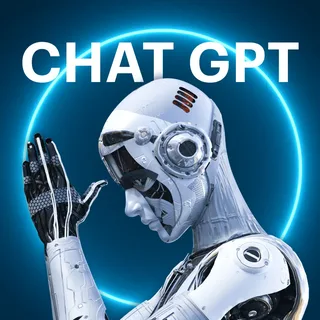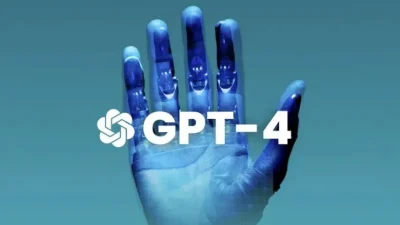Artificial intelligence has revolutionized content creation, with GPT-4 standing out as one of the most powerful tools available. However, its capabilities come with inherent risks, including the potential misuse of the model for generating fake news and spreading misinformation. This article explores the dangers associated with using GPT-4 for dishonest purposes and offers practical strategies to mitigate these risks.
The Power of GPT-4 in Content Creation
GPT-4 represents a significant advancement in natural language processing (NLP). With its ability to generate coherent, contextually relevant, and human-like text, it has found applications in a variety of fields, including marketing, customer service, education, and creative writing. However, its effectiveness as a tool for mass communication also makes it a potential vehicle for spreading fake news.
Why GPT-4 Is Vulnerable to Misuse
- Highly Convincing Outputs. GPT-4 generates text that closely mimics human writing styles, making it difficult to distinguish between AI-generated and human-written content.
- Customizable Narratives. Users can fine-tune prompts to produce specific narratives, even if they are false or misleading.
- Scalability. The ability to produce large volumes of text quickly makes GPT-4 an attractive option for creating and disseminating fake news on a massive scale.
The Risks of Using GPT-4 for Fake News
The misuse of GPT-4 for spreading misinformation can have far-reaching consequences, including:
Political Manipulation
AI-generated fake news can be weaponized during elections to influence voter behavior. False narratives can tarnish candidates’ reputations, polarize societies, and erode trust in democratic institutions.
Public Health Threats
During crises such as pandemics, misinformation about treatments, vaccines, and preventive measures can lead to widespread confusion and harm. GPT-4’s ability to craft convincing health-related content amplifies this risk.
Damage to Brand Reputation
Fake news targeting businesses can lead to loss of consumer trust, financial losses, and long-term damage to brand reputation. AI tools like GPT-4 can be used to fabricate reviews, testimonials, or news articles that harm companies.
Social Polarization
Misinformation can deepen societal divides by fueling outrage, reinforcing biases, and creating echo chambers. GPT-4’s ability to produce emotionally charged content exacerbates this issue.
Identifying Fake News Generated by GPT-4
Detecting AI-generated fake news is challenging due to the quality of the content produced. However, some strategies can help:
- Analyzing Language Patterns. GPT-4 often lacks subtle inconsistencies in tone or style that human writers might have.
- Source Verification. AI-generated content may cite non-existent or unreliable sources.
- Metadata Analysis. Examining the metadata of digital content can sometimes reveal signs of automated generation.
Comparison of Human-Written vs. GPT-4 Generated Text
| Criteria | Human-Written Text | GPT-4 Generated Text |
|---|---|---|
| Creativity | High and contextually nuanced | High but occasionally overgeneralized |
| Consistency | Can vary based on author expertise | Consistently coherent |
| Source Citation | Typically reliable | May fabricate or omit sources |
Strategies to Mitigate the Risks
Addressing the misuse of GPT-4 for creating fake news requires a multi-faceted approach involving technology developers, policymakers, educators, and end-users.
Developer-Level Measures
- Content Watermarking.Developers can implement invisible watermarks in AI-generated text to help identify content created by GPT-4.
- Prompt Restrictions. Limiting the types of prompts that GPT-4 can respond to can reduce the risk of generating harmful content.
- Ethical AI Training. Training the model to recognize and avoid generating false or harmful content is a crucial preventive measure.
Policy and Regulation
Governments and international organizations can play a role in curbing misuse by:
- Enforcing transparency requirements for AI-generated content.
- Establishing penalties for the deliberate spread of misinformation using AI tools.
- Encouraging the development of verification technologies to identify AI-generated fake news.
Public Awareness and Education
Educating users about the risks of fake news and the role of AI in generating it can empower individuals to critically evaluate the information they consume. Media literacy campaigns should focus on:
- Teaching people how to verify sources.
- Encouraging skepticism towards sensational headlines.
- Promoting awareness of the capabilities and limitations of AI tools.
Organizational Best Practices
Businesses and media organizations can minimize risks by adopting internal guidelines for AI usage:
- Human Oversight. Ensure all AI-generated content is reviewed by a human editor.
- Fact-Checking Protocols. Establish strict fact-checking procedures for any AI-generated outputs.
- Transparency Statements. Clearly disclose when content is AI-generated.
Mitigation Measures and Their Benefits
| Measure | Implementation | Benefits |
| Content Watermarking | AI developer feature | Identifies AI-generated content |
| Fact-Checking Protocols | Organizational policy | Reduces the spread of misinformation |
| Media Literacy Campaigns | Public awareness initiatives | Empowers critical consumption |
Ethical Considerations
The development and use of AI models like GPT-4 raise important ethical questions:
- Accountability. Who is responsible for the misuse of AI tools—developers, users, or both?
- Transparency. To what extent should organizations disclose the use of AI in their operations?
- Equity. How can access to powerful AI tools be managed to prevent misuse while encouraging innovation?
Conclusion
GPT-4 is a remarkable tool with transformative potential, but its misuse for generating fake news poses significant challenges. By implementing robust safeguards, fostering public awareness, and ensuring ethical development, we can harness the benefits of GPT-4 while minimizing the risks of misinformation.






